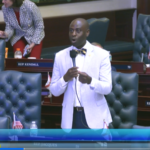New Jersey insurance regulators plan to eliminate a never-used legal entity designed to monitor and encourage auto insurers to write more business in higher-risk areas of the state.
The plan, known as the Territorial Rating Equalization Exchange (TREE), was modeled after risk exchange systems in which insurers in low-risk areas would subsidize premiums in high-risk areas.
Insurance regulators first proposed the plan in the wake of the deregulation of the state’s auto insurance market, and its reliance on territorial ratings that in some cases had not been updated since the 1940s, when portions of the state were significantly less urbanized.
TREE aimed to alleviate concerns by some insurers that they would be at a disadvantage in writing policies in high-risk areas.
Now, regulators have essentially declared TREE to be a solution in search of a problem.
The program, once established, never became operational and the Department of Banking and Insurance says the problem it was designed to address — namely, cost and availability of coverage — never really materialized in the auto insurance market.
A 60-day comment period on the proposal to eliminate TREE ends in September.
Topics Auto New Jersey
Was this article valuable?
Here are more articles you may enjoy.


 Marsh Sues Aon, Ex-Team Leader Over Exit of 20 Construction Surety Employees
Marsh Sues Aon, Ex-Team Leader Over Exit of 20 Construction Surety Employees  Cincinnati Financial Finishes Q1 in the Red Due to Catastrophes
Cincinnati Financial Finishes Q1 in the Red Due to Catastrophes  Business Moves: CRC Group Acquires ARC in E&S Deal
Business Moves: CRC Group Acquires ARC in E&S Deal  Did Florida House ‘Sneak’ Attorney Fee Wording Into Phosphate Mine Bill?
Did Florida House ‘Sneak’ Attorney Fee Wording Into Phosphate Mine Bill? 

